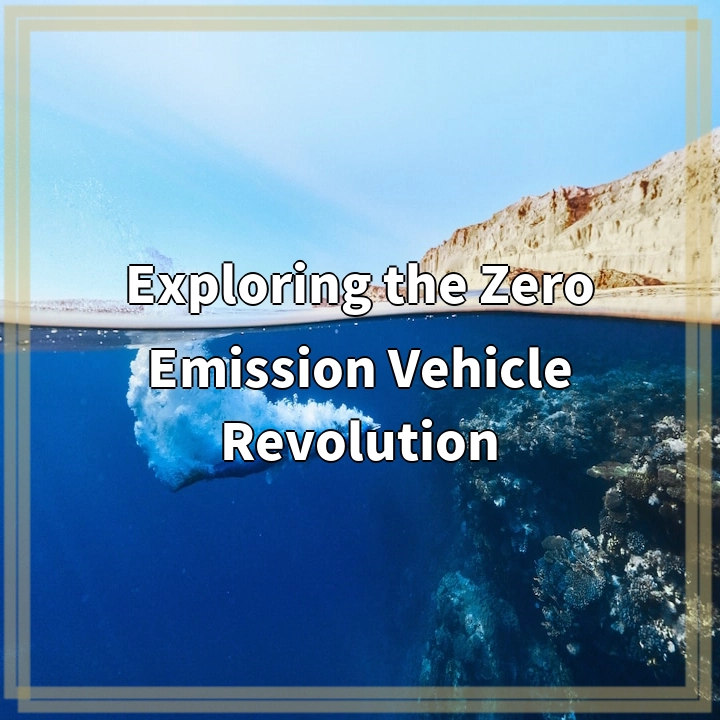
What it is:
Exploring the Zero Emission Vehicle Revolution
Zero Emission Vehicles (ZEVs) are vehicles that produce zero tailpipe emissions during operation. They are powered by alternative fuels or use advanced technologies that eliminate or minimize harmful emissions such as carbon dioxide (CO2), nitrogen oxides (NOx), and particulate matter.
Real-World Problems
The adoption and widespread use of ZEVs face various challenges and real-world problems that need to be addressed for a successful transition towards a more sustainable transportation system.
1. Limited Infrastructure:
One of the main barriers to ZEV adoption is the limited infrastructure for refueling or recharging. Electric vehicles (EVs) require a robust charging network, while hydrogen fuel cell vehicles (FCVs) need an extensive hydrogen refueling infrastructure. The lack of charging or refueling stations can deter potential buyers and limit the deployment of ZEVs.
2. Range Anxiety:
Range anxiety refers to the fear of running out of battery or fuel while driving. It is a common concern for potential EV buyers due to the limited driving range of some electric models. Although the range of EVs is improving, addressing range anxiety is crucial to increase consumer confidence and encourage more people to switch to ZEVs.
3. High Vehicle Costs:
The upfront costs of ZEVs are often higher compared to conventional internal combustion engine vehicles (ICEVs). The higher price can be attributed to the costs of developing and manufacturing advanced technologies, limited economies of scale, and the cost of batteries for EVs. Lowering the cost of ZEVs through incentives, subsidies, and technological advancements is necessary to make them more accessible and affordable to the general public.
4. Limited Model Variety:
Although the availability of ZEVs has been increasing, the overall selection of models compared to traditional gasoline-powered vehicles is still limited. Consumers might have specific preferences for vehicle types, sizes, or features that might not be readily available in ZEV options. Increasing the variety and options for ZEVs can help attract a wider range of consumers and cater to different needs and preferences.
5. Battery Life and Recycling:
Lithium-ion batteries, commonly used in electric vehicles, have a limited lifespan and eventually require replacement. Proper recycling and disposal of used batteries are crucial to minimize the environmental impact and ensure the sustainable lifecycle management of ZEVs. Developing efficient battery recycling systems and promoting responsible end-of-life practices is essential for the long-term success of ZEVs.
In conclusion, while the zero emission vehicle revolution holds great promise for mitigating the environmental impact of transportation, several real-world problems need to be addressed. These include limited infrastructure, range anxiety, high vehicle costs, limited model variety, and battery life and recycling. By finding solutions to these challenges, we can accelerate the adoption and transition towards a cleaner and more sustainable transportation system.

Solutions to Real-World Problems of the Zero Emission Vehicle Revolution
Addressing the challenges associated with the adoption of Zero Emission Vehicles (ZEVs) requires innovative solutions and collective efforts from stakeholders in the transportation sector.
1. Infrastructure Expansion:
To encourage the widespread adoption of ZEVs, it is crucial to invest in the expansion of charging and refueling infrastructure. Governments, private companies, and communities should work together to develop a robust network of charging stations for electric vehicles and hydrogen refueling stations for fuel cell vehicles. This expansion should consider strategic locations, such as along major highways, in urban areas, workplaces, and residential buildings.
2. Improving Range and Battery Technology:
Continued advancements in battery technology are essential to increase the driving range of electric vehicles and address range anxiety. Research and development efforts should focus on enhancing battery capacity, efficiency, and reducing charging times. Governments and industry players should invest in research and provide support for innovative battery technologies, such as solid-state batteries or advancements in lithium-ion batteries.
3. Cost Reduction and Incentives:
To make Zero Emission Vehicles more affordable and attract a wider consumer base, it is important to reduce the upfront costs. Governments can provide incentives, tax credits, or subsidies to lower the cost of ZEVs. Additionally, economies of scale can be achieved by increasing production volumes, which can lead to cost reductions. Collaboration between automakers and technology suppliers can drive down costs and make ZEVs more accessible to the general public.
4. Model Diversity and Consumer Preferences:
Automakers should expand their range of ZEV models to cater to a wider variety of consumer preferences. This includes offering different vehicle types, sizes, features, and price ranges. By providing more options, consumers can find ZEVs that align with their specific needs and preferences. Collaboration between manufacturers and feedback from potential buyers can help drive the development of diverse ZEV models.
5. Responsible Battery Life Cycle Management:
To address the issue of battery life and recycling, it is crucial to establish efficient and sustainable battery recycling systems. Governments and industry stakeholders must invest in research and development of recycling methods to recover valuable materials and reduce the environmental impact of battery disposal. Promoting responsible end-of-life practices, such as proper collection and recycling of used batteries, will ensure the longevity and sustainability of ZEVs.
In conclusion, overcoming the challenges faced during the zero emission vehicle revolution requires a multi-faceted approach. Solutions involve expanding the charging and refueling infrastructure, improving battery technology, reducing costs through incentives and economies of scale, diversifying vehicle models, and establishing responsible battery life cycle management practices. By implementing these solutions, we can accelerate the transition towards a more sustainable and zero-emission transportation system.















